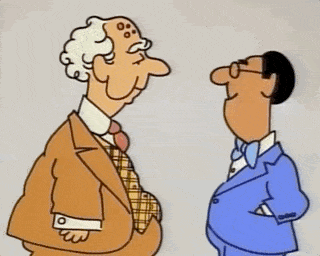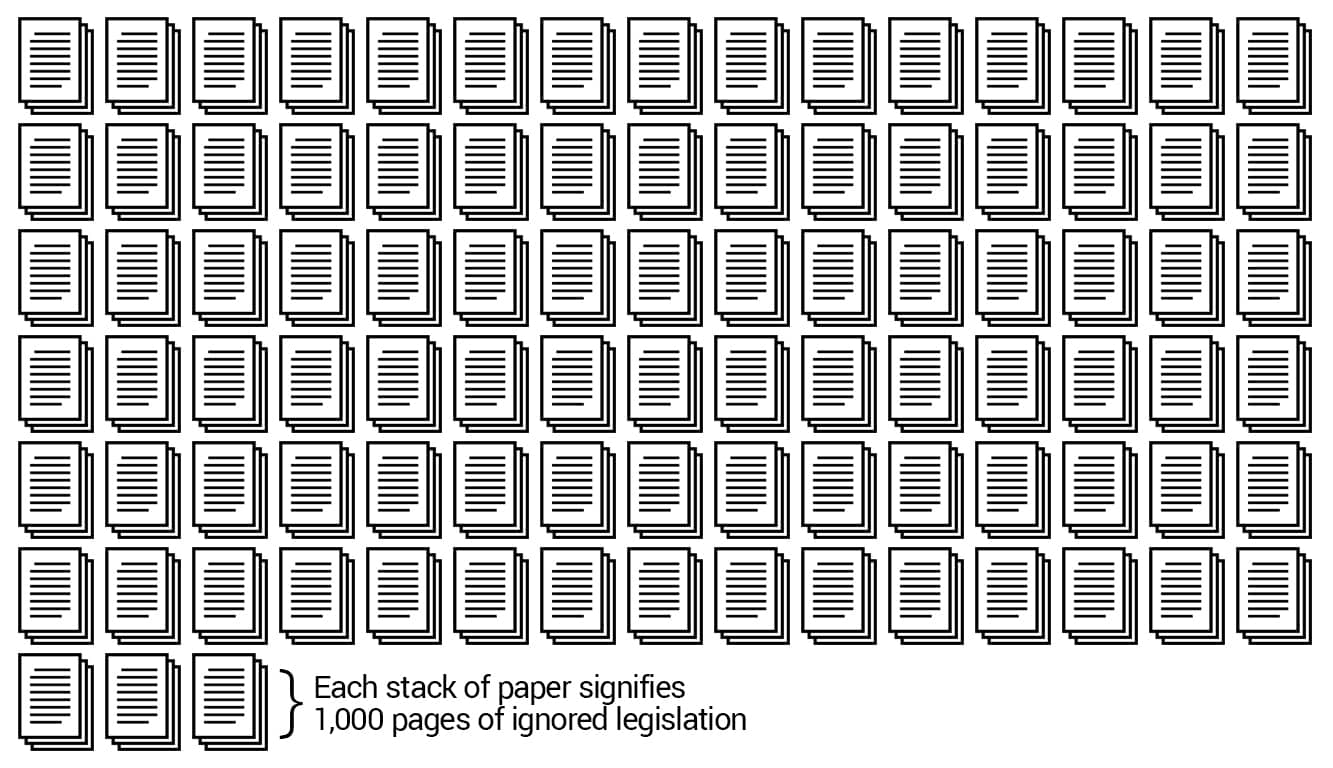In 1976, Schoolhouse Rock released the now infamous short "I’m Just a Bill," which has gone on to be the foundation of many students' understanding of the American legislative process. The short describes the many steps involved for a bill to become a law, and as the song portrays, this is a long process with many twists, turns, and hurdles that can lead to a bill’s possible demise. Fortunately, our protagonist Bill is one of the lucky ones that becomes a law, but that made me wonder - just how lucky? And where are all of Bills friends getting stuck in their own journeys to becoming laws? To find out, let’s consult the data.
Before diving in, we should talk about all of the steps involved for a bill to become a law. Obviously I recommend "I’m Just a Bill," but here’s another summary: First, a bill, which is essentially the proposal for a law, is introduced in either the House of Representatives or the Senate. From there, the bill would be referred to a committee(s). There the bill may be discussed and refined. If the committee decides to report favorably, the bill will be scheduled for debate and after some debate, it may be voted on by the entire House or Senate. If the bill passes the vote in the first chamber, it gets sent to the other chamber (from the House to the Senate or vice versa) and the whole process repeats. If the bill is successful through both chambers, it’ll be sent off to the White House where it is up to the President to either sign the bill into law or veto the bill (and possibly send it back to Congress). At the end of the year, any bill that fails to pass through all of these steps dies, nullifying any of its progress.
So there are a lot of steps involved and therefore a lot of points at which a bill can fail. Beyond just knowing how lucky Bill was to become a law, I was also curious if there were any particular tricky spots where most bills fail. If we use popular news/media as a reference, a significant amount of it happens on the floor of the House or Senate during debate or votes, but is this really the case? Let’s see how bills have flowed through the two chambers of Congress thus far this year and see where the big holdups are.
As of Jan 03, 2019
As of Feb 03, 2019
As of Mar 06, 2019
As of Apr 06, 2019
In the first three months of 2019, the 116th Congress introduced about 3,250 bills. However, by early April, only about 40% of those bills were even discussed in committee and even worse, only about 5% were debated and/or voted on. That being said, it is still early on in the year and historically, it takes about 95 days on average for a bill to become a law, so there is still time.
As of May 07, 2019
As of Jun 07, 2019
As of Jul 08, 2019
Half way through the year, nearly 6,000 bills have been introduced, but the rate of success still remained largely the same (if not worse). In fact, as of early July, Senate committees had only reviewed 12% of the bills that were introduced. Let’s fast forward some more and see if it gets any better.
As of Aug 08, 2019
As of Sep 08, 2019
As of Oct 10, 2019
This brings us to October 2019. As of October 10, 2019 (when this data was pulled), more than 7,500 bills had been introduced between the House and the Senate. Yet we can see that only 8% were ever scheduled for a debate on the floor. So where are the remaining 92% of these bills?

About 30% (roughly 2,250 between both chambers) of our bills are stuck in committee. This isn’t entirely surprising, because it is a committee’s job to determine which bills are worth further discussion by the entire Congress. In essence, committees act as gatekeepers to ensure that the rest of Congress is not spent endlessly debating every single measure. As Bill puts it, committees are where “a few key [members of Congress] discuss and debate whether I should be a law.”
Yet, even after we throw in all the bills that committees are mulling over, which is supposed to be the biggest hoop to jump through for a bill, we still have 62% of bills that have been introduced in Congress but never even see the light of day in committee. This means that more than 60% of the ideas and proposals that Congress is supposed to be working on have been all but ignored since their inception.
If we imagine these bills purely as stacks of paper, where each bill averages roughly 20 pages, that would mean there are 93,000 pages of unreviewed bills just collecting dust on a sad ignored desk somewhere in Washington, D.C.
But these thousands of ignored bills are more than just the sheets of paper they’re printed on. Just like our friend Bill, all bills are meant to represent the wills and desires of the public, ideas that ideally make the country better off. Not all bills are superstars or are going to change the world, but among all those ignored bills, there are bills to fix a broken healthcare system, better regulate guns, and make American students safer and healthier. Failing to debate or even review these bills is doing a disservice to the American public and all of the proposals for improvement that these bills represent.
So, yes, Bill was remarkably lucky for becoming a law. There is still time left to get some of Bill’s ignored friends rolling. So maybe consider taking a look at some of those forgotten bills, and if you find something that interests you, I know just the person who you should call.
* * *
This piece only tackles a fraction of the complicated system that is the U.S. legislative process. If you’re interested, there are many other similarly themed pieces about all that helps to make (or kill) a bill. See below for a very non-exhaustive list:
- From Andrew Prokop: “Beating the odds” (accompanying video)
- From Susan Milligan: The Congressional Secret Society
- From SNL (for humor): “How A Bill Does Not Become A Law”
Methodology and minutia
All bill data comes from ProPublica’s Congress API. Actions and general information was downloaded for each specific bill that was introduced as of October 10, 2019 (H.R.1 - 4630 and S.1 - 2594).
On any given day, a bill’s status was determined based on the description of actions taken on that bill on that day. If a bill moved through multiple stages in a given day, the last status of the bill is shown for that date. For example, on July 23, 2019, H.R.249 was placed on the House calendar (“PLACED ON THE UNION CALENDAR, CALENDAR NO. 128.”), debated (“DEBATE - THE HOUSE PROCEEDED WITH FORTY MINUTES OF DEBATE ON H.R. 549”), and failed to pass a vote (“ON MOTION TO SUSPEND THE RULES AND PASS THE BILL, AS AMENDED FAILED BY”), therefore appearing in the "VOTE" bucket on that date.
You can find all of the code and data from this project in this repo.


